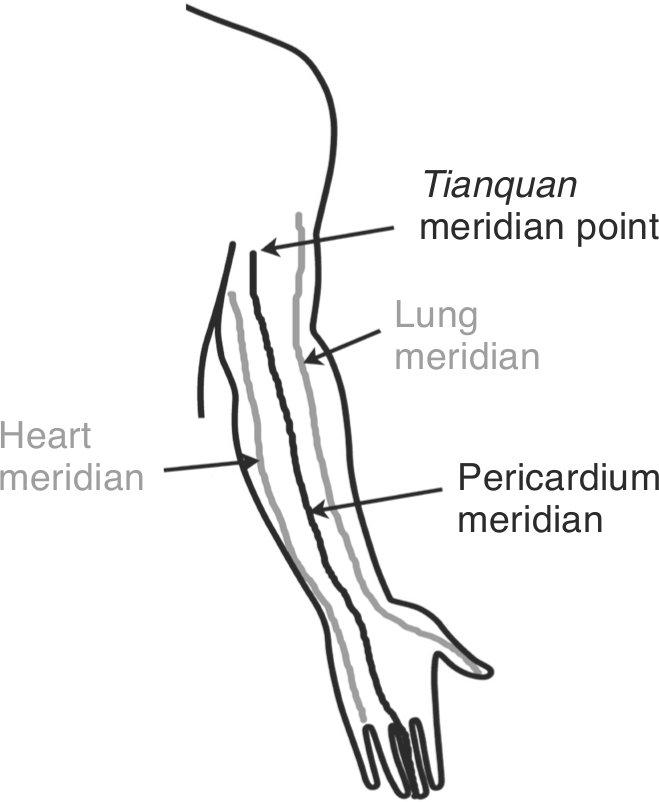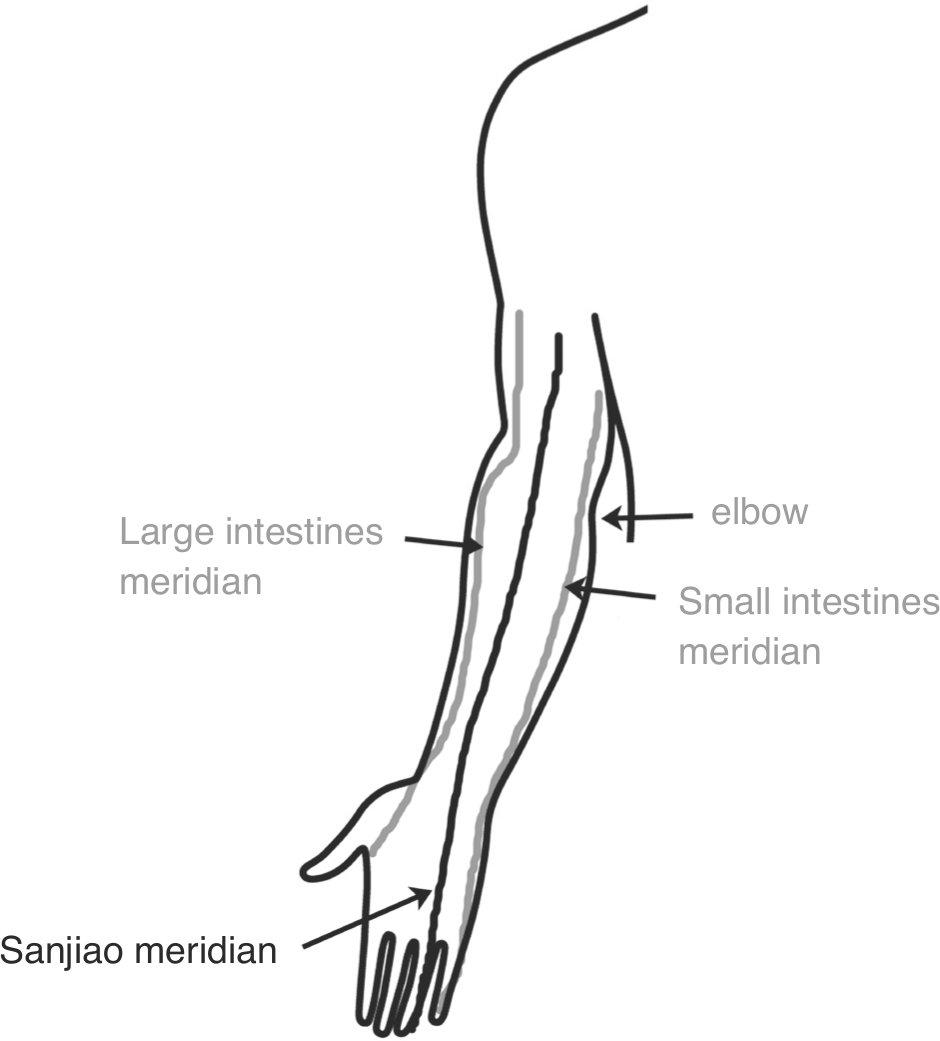In order to improve the fluidity of the meridians and thereby body energy, I have developed a series of massages that can be carried out daily. They are simple to do and are safe for people without training in massage techniques to practise. For a thorough explanation of how to perform each massage, please refer to the video at https://www.youtube.com/watch?v=79mu7LOplqQ&feature=youtu.be for more detailed directions.
Daily massage 1: Hair combing
The practice of hair combing as part of a healthy-living regimen has been around in China, and many other countries, for hundreds of years. Chinese women in ancient times used a type of comb called a Bie to comb their hair. They used hair combing with essential oils as a substitute for washing hair, since catching a cold from having wet hair was relatively dangerous, especially to those who were not wealthy. A lack of heating and food made the recovery process a potentially difficult one, with a high risk of complications. Women therefore took what measures they could to avoid catching a cold in the first place. During the winter in particular, the process of washing and drying hair was risky so combing with sweet olive oil was developed as an alternatives. Traditional Chinese Medicine practitioners of those times discovered that besides the obvious benefits of improving hair quality, hair combing could improve the fluidity of the meridians in the head area. Hence it became more than just a way to improve personal hygiene. It was a health practice in iteself.
Several important meridians pass through the head (see Figure 6.1). At the centre of the head lies the Du meridian, and close beside it on each side the two bladder meridians. On both sides of the head lie the gallbladder meridians. Normally it is difficult to massage these meridians since these areas are covered by hair, but using combs or firm brushes we can gently massage these areas in the correct direction for meridian flow (front to back).
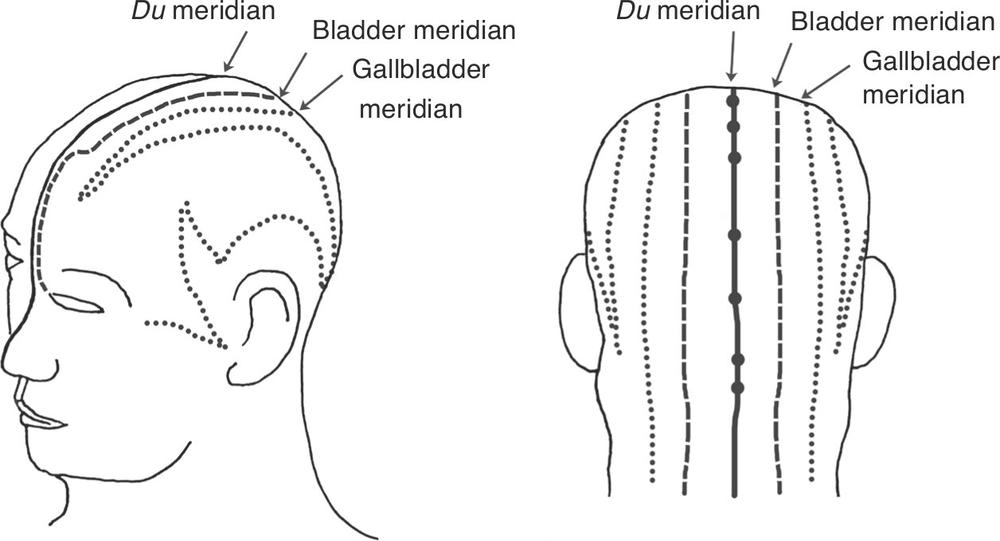
Figure 6.1: Back and side views of the head showing the position of the central Du meridian and the two bladder and gallbladder meridians
Before combing, we need to make sure that we have chosen a suitable comb or brush. It is important to find one that can deliver a firm yet gentle pressure. The tip of the comb must not be pointy or sharp as it may damage the scalp. Furthermore, in ‘combing’ the forehead where there is no hair a gua sha board (see Figure 6.2) should be used instead.

Figure 6.2: Gua sha board
Comb along these five meridians (Du, two bladder and two gallbladder meridians) according to the direction of flow; they all travel in the same direction, from the front of the head towards the back. Thus, it is important that we comb the hair only in that one direction rather than back and forth. Comb 100 times on each meridian for a total of 500. To increase comfort during the combing process, we can add certain essential oils to the scalp to lubricate the comb. I recommend all-natural herbal oil as we want to avoid any chemicals.
The two bladder meridians begin at the Jingming meridian point located on the interior corner of the eyes. Start from just above the eyes (the nose end of each eyebrow) with the toothless, smooth-edged comb or gua sha board and ‘comb’ upwards, over the forehead to the hair line. Massaging this area is beneficial for people who suffer from high eye pressure and glaucoma in addition to problems associated with the bladder.
The two gallbladder meridians are located on the sides of the head. As with the bladder meridians, start ‘combing’ from the area near the eyes with a gua sha board but from the hairline use a comb or brush and move towards the back of the head in uni-directional strokes. Comb 100 times on each side of the head using an essential oil for lubrication.
I recommend doing this exercise with a family member or friend as it is easier to comb other people’s hair than your own. The entire exercise should take only around 10 to 15 minutes and should be done once a day. Again, for more in-depth instructions, please watch the video demonstration at https://www.youtube.com/watch?v=79mu7LOplqQ&feature=youtu.be.
Daily massage 2: Back massage
Hair combing can be done alone, but back massage does require a partner.
As mentioned earlier, the bladder meridian is one of the most important for TCM healthy living. It governs the waste removal process for all the meridians. By improving the fluidity of the bladder meridian we can improve the fluidity of all meridians. The main part of the bladder meridian lies on the back of our body, which is the reason why back massage can be effective in improving fluidity.
Prior to doing the massage, we should examine the back to see if there are any abnormal lumps or areas of rigidity. Lumps signify blockages within the meridian. By checking the location of the lumps using the meridian chart (see Figure 6.3), we can see which of our organs have problems. For example, if we notice a lump near the Ganshu meridian point, it is possible that there may be abnormalities in our liver. If a lump is discovered near the Xinshu meridian point, then the abnormality may be in the heart. Through practising back massages daily, such lumps may disappear over time.
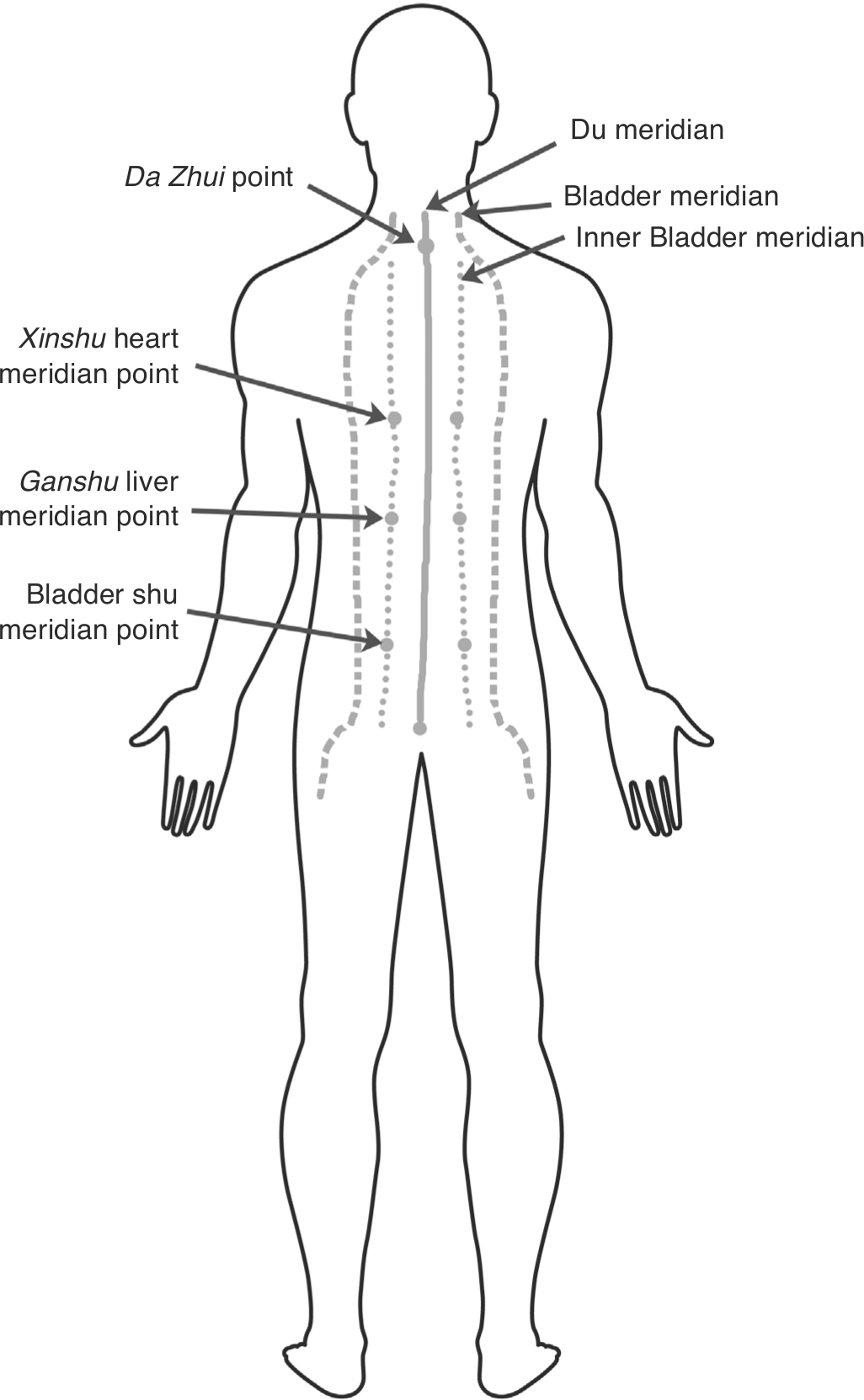
Figure 6.3: The back showing the Du and bladder meridians and the most important meridian points relating to blockages.
It is helpful if you can find a good essential oil for this massage. In Chinese pharmacies there are many oils that help to improve the fluidity of the meridians and blood flow in the massage areas. It is beneficial to use such oils, but if it is difficult to acquire them, any oil that lubricates the skin will be adequate.
We can either use massage tools such as the popular Gua Sha board (see Figure 6.2) or simply use our hands.
Have the person receiving the massage lie face down on the bed. The person giving the massage stands at the head end, facing the top of the head of the person to be massaged. The back massage can be broken down into three parts: shoulder massage, Du meridian massage and the bladder meridian massage. Figure 6.3 shows where these meridians are.
- Shoulder massage: Have the person move their body towards the top of the bed until their head is outside the edge of the bed so they can lie completely flat but without squashing their face. Massage the shoulders in this position, working on both simultaneously if using hands. Apply massage oil prior to the massage to avoid damaging the skin. It is normal for the skin to appear red afterwards; it is a sign of poor circulation in the area. Massage 30 strokes on each shoulder, starting from the centre of the neck and moving towards the outside edge of the shoulder.
- Du meridian massage: Have the person move back down the bed. Apply massage oil and massage the centre of the back (over the spine) starting from bottom of the neck (Da Zhui point in Figure 6.3) and going down towards the tailbone. The direction of the massage is very important. We should always massage in a top-down direction as that is the direction in which the meridian flows. Repeat the massage 30 times.
- Bladder meridian massage: In the same position, apply massage oil and massage both bladder meridians, which run on either side of the Du meridian. Repeat the massage 30 times on each side. If any area becomes red during the massage, you may massage these areas further after the initial 30 times.
The entire back massage should take around 10 minutes to complete. When practised daily it will achieve noticeable results in two to three months. One of the most common results is a less fleshy back. Most people with poor meridian fluidity in the back tend to have a thick layer of fat in the back area. This massage can effectively remove the fat by improving fluidity and circulation. Other results include better skin quality and complexion as well as a reduction in abnormal skin conditions, such as blackheads and pimples. The reasons for these changes can all be attributed to an improvement in the body’s waste removal ability as a result of having a more fluid bladder meridian.
TCM believes that the causes of many chronic diseases originate from the body having a poor waste-removal system. These chronic diseases include several skin conditions, asthma, chronic constipation, some cases of obesity, and more. This massage technique, when practised daily, is an effective method of treating these diseases.
Daily massage 3: Pericardium meridian massage
The two pericardium meridians are located on the centre line of the inner arms (see Figure 6.4). Apply massage oil to the arm and use your thumb. Start massaging from the upper arm (Tianquan meridian point) towards the end of the middle finger. Repeat the massage 10 to 20 times on each arm.
As I have said, it is common to see redness appear near the massaged areas. The redness signifies blockage in the meridian and it will appear less often once the fluidity of the associated meridian has improved.
The pericardium meridian massage is an effective way to relieve various heart-related symptoms caused by an increase in pericardial fluid. As I explained on page 87, the pericardium is a double-walled sac containing the heart. Pericardial fluid acts as a barrier and a lubricant between the heart and its surroundings. When there is an increase in pericardial fluid, the excess fluid will hinder the heart’s regular functioning. This may result in palpitations, shortness of breath, irregular heartbeat and/or dizziness. An increase in pericardial fluid often occurs when the body is combating disease or performing major self-healing functions. Massaging the pericardium meridians helps the body remove the excess pericardial fluid and restore the heart’s regular functioning, thereby eliminating the problem symptoms.
Other useful massages
Besides the three daily massages, there are several others that can be done daily or can be useful in particular situations. They are included in the video at https://www.youtube.com/watch?v=79mu7LOplqQ&feature=youtu.be.
Lung meridian massage
The two lung meridians are located near the pericardium meridians (see Figure 6.4), essentially down the outer edge of the arm when the palm of the had is facing forwards. After the pericardium massage, you can massage the portion of each lung meridian that runs from the elbow to the finger tips. Using your knuckles, gently massage the area about 15 to 20 times by running the knuckles from elbow to wrist.
Massaging the lung meridian can improve the functioning of the lungs and is especially useful when a person has a cold. This massage is also very helpful for people with any type of skin disease.
Gallbladder meridian massage
The gallbladder meridians are located on the exterior of the thighs (see Figure 6.5). Massaging them can improve the functioning of the gallbladder, which increases the person’s ability to absorb nutrients. Using a similar technique as for the lung meridians, massage the exterior of the thighs 20 times.
Besides massaging the gallbladder meridian, one can also strike the area with a loosely clenched fist in three or four places, starting at the top of the thigh and working down towards the knee.
Since the release of this book in China in 2005, the gallbladder meridian massage has gained popularity within the Chinese community. The massage is suitable for all ages and can be practised daily.
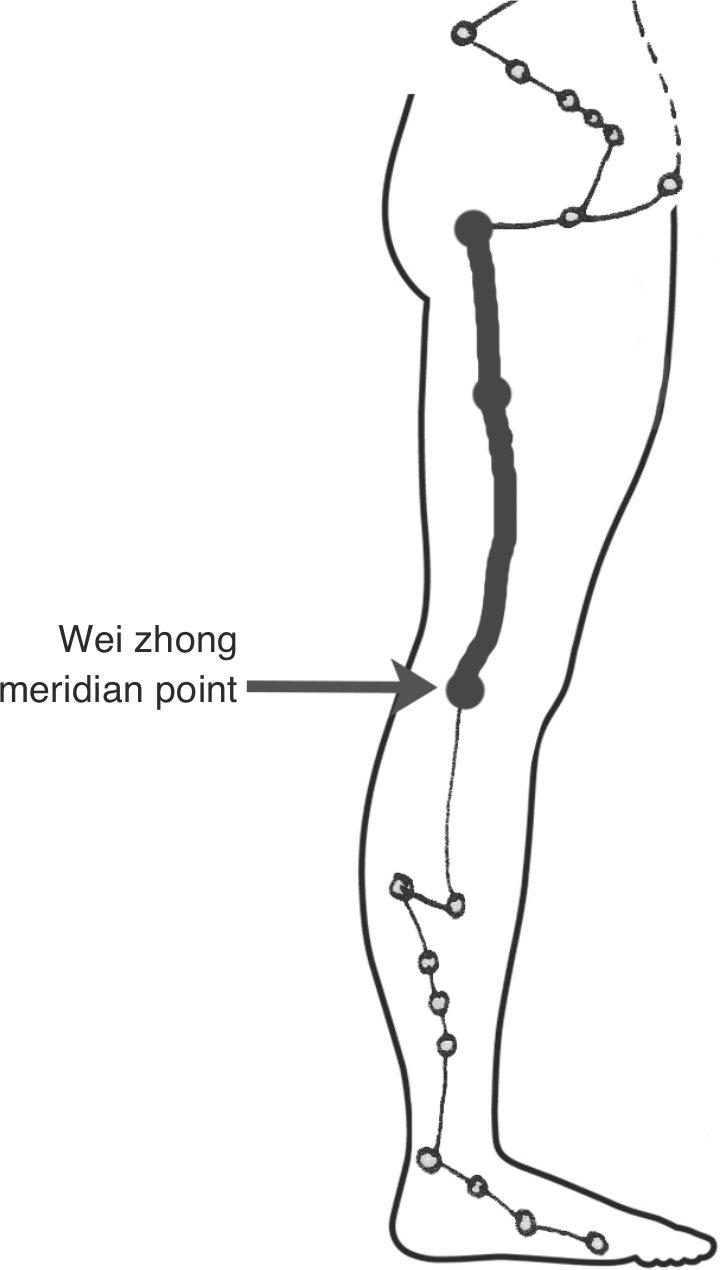
Figure 6.5: The gallbladder meridian in the thigh
Sanjiao meridian massage
The two Sanjiao meridians are located on the back of the arms; their location is the direct opposite of the pericardium meridians (see Figure 6.6). Separate the Sanjiao meridians into two sections: the upper section which goes from the shoulder to the elbow, and the lower section which goes from the elbow to the fingertips. Massage the upper section using the technique that we used for the lung meridian, with the knuckles of the fist, running them downwards from shoulder to elbow. Massage the lower section of the meridian using the technique that we used for the pericardium meridian, using the thumb, running it downwards from elbow to the end of the fingertips.
The Sanjiao massage is useful for alleviating neck and shoulder stiffness.
Summary
- The programme of simple home massages described in chapter 6 and in the video at https://www.youtube.com/watch?v=79mu7LOplqQ&feature=youtu.be when used as a whole on a regular basis can promote self-healing and resilience.
- The programme requires no expertise or training, takes around 15 minutes a day and is good to do with the help of family members.
- Overall the programme removes meridian waste and overcomes blockages in the meridian system.
- Daily simple massage 1: Combing – this massages the five meridians in the head (central Du plus two bladder and two gallbladder meridians).
- Daily simple massage 2: Back – this focuses on the inner bladder meridian that consists of meridian points that link the bladder meridian to other meridians (e.g. heart, liver); unclogging the bladder meridian can slow down aging and combat chronic illness.
- Daily simple massage 3: Pericardium – massaging this meridian in the arm can improve heart symptoms such as palpitations.
- Daily simple massage 4: Other meridians – these include the lung meridian for breathing and combating colds; the gallbladder meridian in the legs; the sanjiao meridian in the arms; and the wei zhong meridian point behind the knees that helps combat lower back pain.
- Everybody can be empowered by these massage techniques to maintain their own health and allow their bodies to self-heal where necessary.

